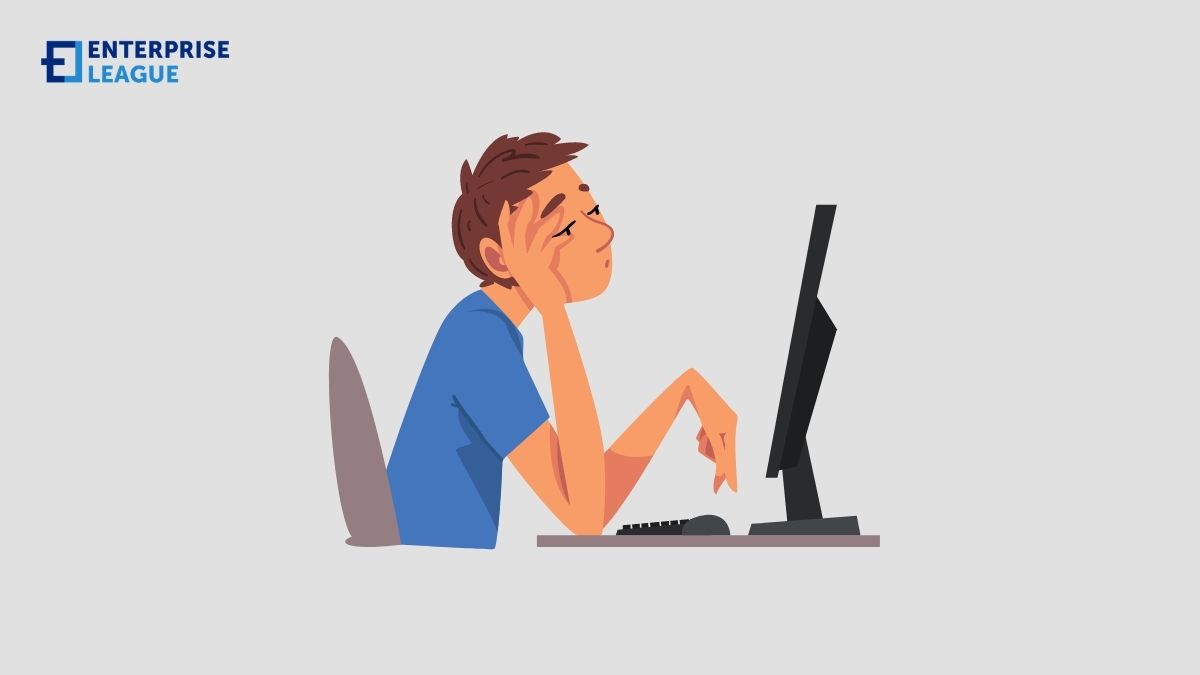As a business owner, you are the one that decides what work environment the company will have. That means that happy, motivated, and capable employees are your success to claim. But what if you are dealing with poor work performance and unmotivated employees? That’s on you too.
Not knowing how to deal with poor work performance will always be considered poor leadership. Besides the fact that you will lose time, money, and energy while ignoring employees that don’t perform well, you will also demoralize the other employees. In the end, not addressing performance issues in the workplace will lead to a toxic work environment with unmotivated employees.
Entrepreneurs share how they manage poor work performance
Since we are pretty sure you don’t want to build an unhealthy work environment, we asked professionals, how do they manage poor work performance in order to get the benefit for both sides. And guess what? There are more than a few ways you can try to help them overcome whatever is pulling them back.
Motivate
Someone with 100 percent motivation and 75 percent ability to perform will often produce above-average results. However, regardless of motivation, a worker with just 25% talent would not be able to reach the level of success you intend. This is why job selection and recruitment are such important aspects of successful management.
During the selection process, make sure to determine capacity appropriately. Later, the answer on how to correct an employee with a weak performance is training and motivation, but most organizations lack the time and money to address major flaws.
Nabil Mounem, Founder & Marketer of Have Websites
Encourage
Encouragement is not the same as praise. A compliment is a positive answer to something that has already been accomplished or completed: “Wow, you did a fantastic job on that report!” Encouragement is a positive reaction to something that is being done or is in the process of being done: “You’re making good progress, and I’m confident the report will be fantastic.”
Darshan Somashekar, Founder & CEO at Spider Solitaire Challenge
Give appropriate training
You should make sure that all team members receive proper preparation, which includes the success goals, simply and succinctly. Since employee development is one of the most important things, be sure you log anything and don’t just talk about it. This ongoing training should provide your staff with new skills and experience that would benefit both you and them in the long run.
Inquire personally with employers to see how the preparation can be changed. Are there any topics on which they’d like to hear more? Do they believe they possess the necessary expertise and abilities for the job? What obstacles are preventing them from finishing the job to a reasonable standard?
Andrew Smith, Founder of CozySeating
Listen first and talk late
If you struggle managing poor work performance sit down with your employee and inquire about their job. Inquire into your frustrations. Inquire about any issues. Inquire about your success. Determine whether or not the employee is aware of the performance problems.
Dennis Thankachan, CEO at Lightyear
Set clear performance standards
Then, I create a performance plan that spans a defined amount of time and outlines milestones, that if met, should turn the performance around. I also make it clear what will happen if the milestones in the performance plan aren’t met, so there are no surprises if employee performance issues end up with letting the low-performing employee go.
Evan Tarver, Co-founder & CEO at Selling Signals sellingsignals.com
As a business owner, I noticed that one of the most common causes of poor performance is lack of adequate job description and absence of clear and written procedures. It is important to let the employee knows what exactly he should do, and assign him tasks along with expected targets to achieve. Those targets have to be measurable and realistic and should be achieved in a previously determined time frame.
The point is that awareness and acknowledgment of all of that is a catalyst that triggers employees to work effectively and productively. Particularly, if there is a clear and effective work progression tracking in the business environment.
Jeremy Ong, Founder of HUSTLR
Regular coaching sessions
Regular coaching sessions can help you find a way to handle employee performance issues and help them get back on track. They’ll feel supported and motivated to pursue their personal and professional goals. You can do this after performance reviews that facilitate a culture of open communication between the employee and the management.
It encourages discussion and helps establish the importance of setting goals. On this note, a performance review should be able to inspire employees to raise their productivity and improve their outlook instead of discouraging them. In our case, by following a real-time feedback session, we’ve tremendously helped them adjust to the new normal setting.
Michael Hammelburger, CEO at The Bottom Line Group
Keep in mind why you hired them
Before discussing with an underperforming employee, reflect on yourself being his/her leader. Try to evaluate the tasks you have given, the goals you set, and whether you have provided ample guidance and support he needs. Besides guiding you on your future discussion with the employee, this also helps you reassess and improve your leadership.
Sam Dolbel, Co-founder and CEO of SINC Workforce
Ask them to set a task deadline
I do not force them a deadline from my side but make them calculate the time they’ll take to finish a task. If due to low performance, they are not able to complete the task within a time frame set by them, I ask them the reason for the same.
I ask them the hurdles they faced or the reasons which caused this failure. While answering these questions, eventually they figure the problem on their own! If they are a genuine learner, they’ll ask me for some time to improve which I happily allow. I provide them with time and courses to improve their skill and perform better.
Shivbhadrasinh Gohil, Co-founder of Meetanshi
Observe
Being an HR or manager is not a piece of cake. This is especially the case when you have to be ready to make difficult confrontations with difficult employees. Here are some tips that on how to handle employee performance issues:
- Give them a chance to improve by providing employee support and observe how they perform at first.
- If the above doesn’t work, confrontation is the only way left and this conversation should not be delayed as you never know if the employee is aware of low-performance or doing it on purpose.
- Be specific while giving feedback, vague feedback may not be good enough for everyone, you need to pinpoint the area of concern.
Mike Thompson, CEO & Direct Lender Hyperlend
Shift responsibilities accordingly
Avoid falling into the trap of assuming that low-performance is the employee’s issue when it can often be due to misalignment. If your employee seems engaged and shows aptitudes that could make them useful in other areas, consider shifting their responsibilities accordingly. Thanks to this strategy, a low-performing employee became a vital member of our company after we made readjustments.
We had discovered that their strengths were being wasted by parts of their role that amplified their weaknesses and ultimately weighed them down. Through some experimentation and flexibility, and understanding our employee’s strong suits, we modified their day-to-day operations and were able to better utilize their talent. In doing so, we avoided the arduous process of having to fire a member of our team.
Linn Atiyeh, Founder and CEO of Bemana
Conclusion
It’s easy to blame someone as lazy and consider that hiring him was a mistake, but that’s something a bad boss would do. Therefore, always be understanding and focus on the bigger picture. We are all human beings and behind an underperforming employee can be a thousand reasons. So next time you are wondering how to deal with poor work performance, implement one of these proven ways. In the end, you might motivate your employee to be even better than you expected him to be in the first place.
More must-read stories from Enterprise League:
- Proven and tested psychological tactics for successful marketing.
- The importance of customer-focused strategy for your business.
- Learn how to deal with being proffesionally ghosted like an expert.
- Unique ways to show your employees you care about them.
- Find out everything you need to know about the 10 Ds of entrepreneurship.
Related Articles
Workplace Violence or Drug Accusations: Protecting Yourself Legally
Accusations of workplace violence or drug-related misconduct can derail a career, even when the claims are unfounded. A single allegation can lead to suspension, internal investigations, damaged professional relationships, and in serious cases, criminal charges....
Workers’ Compensation Costs for Factory and Warehouse Forklift Accidents
Forklifts play a central role in day-to-day operations across factories and warehouses, but they also create a significant risk of injury. When a forklift overturns, strikes a pedestrian, or drops a load, the financial impact reaches far beyond the immediate medical...
Delayed Construction Injury Reports: Impact on Workers’ Comp
Construction work carries unavoidable risks, which is why workers' compensation exists to protect employees after an injury. But one factor can alter the entire outcome of a claim: delayed reporting. In the construction industry, where injuries often occur in...
Workplace Violence or Drug Accusations: Protecting Yourself Legally
Accusations of workplace violence or drug-related misconduct can derail a career, even when the claims are unfounded. A single allegation can lead to suspension, internal investigations, damaged professional relationships, and in serious cases, criminal charges....
Workers’ Compensation Costs for Factory and Warehouse Forklift Accidents
Forklifts play a central role in day-to-day operations across factories and warehouses, but they also create a significant risk of injury. When a forklift overturns, strikes a pedestrian, or drops a load, the financial impact reaches far beyond the immediate medical...






